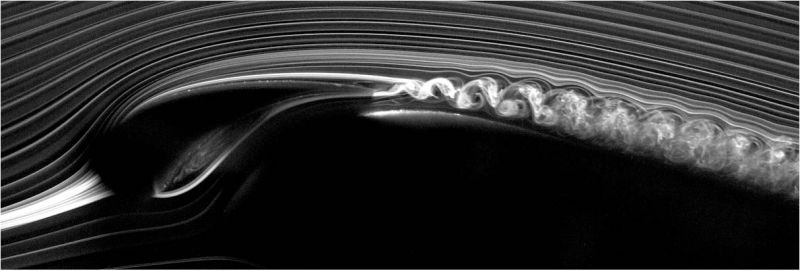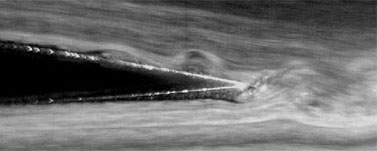e36jon wrote: ↑09 Aug 2018, 21:45
Maybe on-topic? When they show the ultra-slow motion video of the front wings bouncing all over the place I have often wondered what that does to the wings performance. It would seem like there would be a significant tendency for detached flow when the wing is moving upward and therefore reducing the pressure on the bottom / back of all of the wing elements. And likewise an advantageous situation when the wing moves down causing the opposite effect...
Seeing it in writing I guess this same potential effect would apply to all of the downforce generating aero surfaces. And the upsetting force could be any vertical movement.
No one is talking about it, so it's probably not an issue, but to my mind the mechanics seem sound. Any thoughts?
You're starting to enter a bit into the world of "aero-elastics" with that question. Incredibly complicated subject, and not my area of expertise, so I can only explain the top level stuff and you can see whether that informs your question?
So, to start there are two main types of wings that form a type of "oscillating wing" will exhibit: A heaving wing, or a flapping wing. To start, if I just simplify the case to a heaving wing in close proximity to the ground, which has a sinusoidal motion:

Your
ride height now becomes a function of some sinusoidal frequency:
 } )
You also have a few other major parameters to consider:
Reduced Frequency:
 Non-dimensional "Plunge" Amplitude
Non-dimensional "Plunge" Amplitude:

And your new
"effective" Angle of Attack due to the motion:
 } )
So with a heaving aerofoil, the incidence is "positive" when the aerofoil is heaving "down" (i.e. the leading edge is lower than the trailing edge).
With a periodic heaving motion, the aerodynamic forces show a period response at the same frequency as the heave motion, but with a bit of a "lag" relative to the motion itself. This "lag" of how the aerodynamic coefficients are affected depends mostly on the "Reduced Frequency" term that I wrote above.
Essentially, there are three main flow regimes present when you have something like a front wing:
- Ground Effect
(ventui effect we are all familiar with)
- Incidence Effect
(change in AoA = change in coefficients)
- Added Mass Effect
(the displacing of a mass of air due to motion imparts a force on the aerofoil)
There is also a vortex shedding phenomenon present in the flow as well, but it comes in two types: forced and natural. Forced shedding is an inviscid phenomenon, whilst natural shedding is caused by viscous effects.
The forced shedding is linked to the relatively weak "starting" vortex during the transient initial period when the aerofoil accelerates from zero to a certain velocity (kind of like the result of a car hitting a kerb). The total amount of circulation in the flow is pretty much constant, however, there is a change in the effective angle of attack which happens at the mean position - where angle of attack is at its maximum.
The natural shedding typically comes about from bluff bodies but can appear on an aerofoil with sharp edges when separation occurs upstream. This type doesn't need a vertical motion to occur and it basically causes the stagnation point to move around the trailing edge until the flow stalls at which point, the stagnation point then reverses its direction back the other way (sort of a "move until stall and then go back" type thing).
There is something called "Theodorsen Theory" which describes an aerofoil under sinusoidal motion in the freestream (with a small amplitude) in terms of a 2 of the 3 main effects I listed above which you can go check out if you want to.



